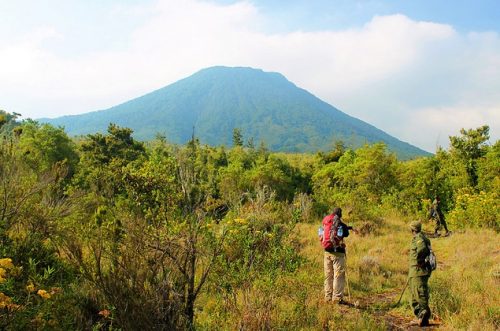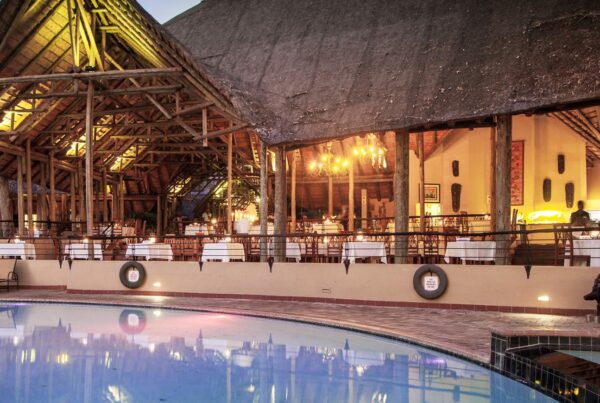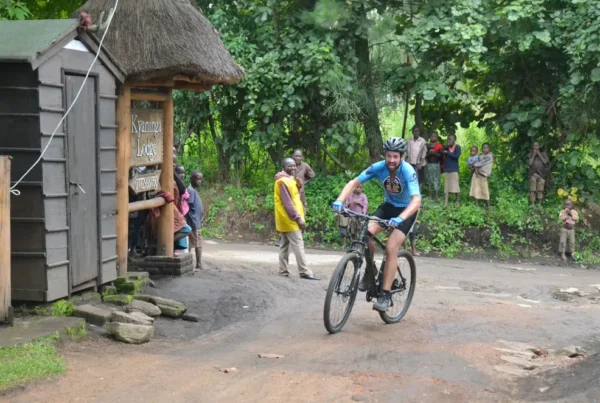Hiking Mount Gahinga: A Guide for Trekkers
Where Volcanoes Whisper to the Sky
In the far reaches of southwestern Uganda, a land of mystery and wonder unfolds, where clouds gather in silence above towering peaks and emerald forests guard secrets of ancient times. This is the land of the Virunga Volcanoes, a chain of majestic giants straddling Uganda, Rwanda, and the Democratic Republic of Congo. Among them rises Mount Gahinga, a dormant volcano of extraordinary beauty and intrigue, whose slopes cradle stories of nature, resilience, and adventure.
Though often overshadowed by its larger counterparts, Sabinyo and Muhabura, Mount Gahinga offers trekkers one of the most rewarding and intimate hiking experiences in East Africa. Its name, which means “pile of stones” in the local language, echoes both its physical form and the symbolic strength of the communities that thrive at its base. To hike Mount Gahinga is to traverse bamboo forests alive with golden monkeys, to ascend into misty montane woodlands, and to stand in awe before a summit crater where alpine vegetation paints the sky.
For trekkers seeking more than physical challenge, hiking Mount Gahinga delivers a profound journey into the heart of the Virunga highlands. It is a trail that blends adventure with cultural discovery, ecological wonder with spiritual reflection. Here, the mountain is not merely a geographical entity but a living presence that rewards patience, endurance, and curiosity.
Location and Setting: The Jewel of Mgahinga Gorilla National Park
Mount Gahinga forms part of Mgahinga Gorilla National Park, Uganda’s smallest national park yet one of its most diverse and enchanting. Located in Kisoro District at Uganda’s southwestern frontier, the park covers just 33.7 square kilometers, but within this compact area lie ecosystems of immense ecological value. Gahinga rises to an altitude of about 3,474 meters above sea level, standing between Mount Muhabura to the east and Mount Sabinyo to the west.
The mountain’s strategic location in the Virunga Conservation Area creates an ecological continuum with Rwanda’s Volcanoes National Park and Congo’s Virunga National Park. Wildlife moves freely across these borders, and the habitats are seamlessly connected, making Gahinga part of a transboundary sanctuary for gorillas, golden monkeys, and an array of bird species.
Trekkers who journey here are immersed not only in Uganda’s landscapes but also in a regional mosaic of cultures, histories, and natural wonders. This geographical positioning gives Mount Gahinga a unique character, where every step carries echoes from across three nations and where the summit becomes a vantage point of international horizons.
Historical and Cultural Significance
Beyond its physical majesty, Mount Gahinga is woven deeply into the cultural fabric of the Batwa and Bakiga peoples. For the Batwa, who once thrived as forest dwellers and hunter-gatherers, Gahinga and its bamboo forests were vital sources of food, shelter, and spiritual grounding. The mountain and its caves held sacred importance, serving as spaces for rituals, storytelling, and communion with ancestral spirits.
Today, though the Batwa no longer live in the forest, their heritage endures through cultural trails and storytelling. Hiking Mount Gahinga often brings encounters with Batwa guides who share their deep ecological knowledge, pointing out medicinal plants, edible roots, and animal tracks that once guided their survival. This cultural dimension adds depth to the trekking experience, transforming it from a mere physical endeavor into a journey through memory and identity.
For the Bakiga and Bafumbira communities living in the highlands, Mount Gahinga also represents resilience. Terraced farmlands climb its lower slopes, testifying to generations of adaptation to challenging terrains. Songs, dances, and oral traditions surrounding the mountain reflect both reverence and interdependence. Thus, every trekker ascending Gahinga participates in a silent dialogue with the communities that hold it dear.
The Hiking Experience: From Bamboo to Alpine Heights
The Trailhead at Ntebeko
Hiking Mount Gahinga begins at the Ntebeko Visitor Center, the main gateway into Mgahinga Gorilla National Park. Here, trekkers are welcomed by park rangers who provide orientation, safety instructions, and guidance for the journey ahead. The atmosphere at the trailhead is charged with anticipation, as mist swirls over the peaks and the sound of distant bird calls filters through the air.
The ascent is typically a six to eight-hour round trip, depending on pace, weather conditions, and time spent at the summit. While considered moderate compared to the more challenging climbs of Sabinyo or Muhabura, Gahinga’s hike demands stamina, patience, and respect for high-altitude conditions.
Through the Bamboo Zone
The first segment of the hike winds through a dense bamboo forest, a habitat that shelters the park’s famous golden monkeys. Their playful movements and vibrant golden-orange fur often catch the eye of observant trekkers. The bamboo zone, found at altitudes between 2,200 and 2,800 meters, also hosts birds such as the Dusky Turtle Dove and the White-starred Robin, creating a lively soundscape that accompanies the steady rhythm of footsteps.
This section of the trail is shaded and relatively gentle, making it a perfect introduction to the hike. Yet beneath its calm beauty lies ecological importance, as bamboo provides essential resources for gorillas and other wildlife.
The Montane Forests
Beyond the bamboo, the trail enters the montane forest zone, where towering trees, moss-covered branches, and a profusion of ferns and lichens create a mystical atmosphere. The air grows cooler, and the trail steeper, requiring measured effort. Here, the vegetation thickens, and occasional clearings reveal glimpses of the volcanic peaks above.
Birdlife becomes abundant, with species such as the Rwenzori Turaco flashing crimson wings across the canopy, while sunbirds dart among flowers. This section reminds trekkers that hiking Gahinga is as much about immersion in biodiversity as it is about reaching the summit.
The Alpine Moorlands
As altitude increases, the forest gives way to alpine moorland vegetation, where giant lobelias and groundsels dominate the landscape. These surreal plants, adapted to extreme conditions, appear almost otherworldly, turning the slopes into a botanical wonderland. The climb here is steeper, and the air thinner, but the dramatic scenery inspires resilience.
The silence of the highlands is profound, broken only by wind and the occasional call of a mountain bird. Every step carries a sense of approaching the pinnacle of both landscape and personal endurance.
The Summit Crater
Reaching the summit of Mount Gahinga is an unforgettable reward. At its top lies a giant swampy crater, stretching about 180 meters in diameter and covered with alpine vegetation. Mist drifts across its surface, and the tranquility is striking, as though the crater were a secret kept by the mountain.
From the summit, panoramic views extend across Uganda, Rwanda, and the Democratic Republic of Congo. On clear days, trekkers may see the chain of Virunga Volcanoes unfolding in grandeur, their peaks piercing the sky in solemn majesty. Standing here, the sense of being on a geographical and cultural crossroads becomes palpable, as horizons blur into shared landscapes.
Flora and Fauna Encounters
Hiking Mount Gahinga offers more than physical achievement; it opens a portal into the ecological wealth of the Virunga region. The mountain shelters diverse flora and fauna adapted to its altitudinal zones.
In the bamboo and montane forests, golden monkeys and occasionally mountain gorillas may be encountered. While gorilla tracking is a separate activity requiring special permits, their presence highlights the importance of Gahinga as part of the gorillas’ range. Small mammals such as duikers and bushbucks also inhabit the slopes, though sightings are less common.
The birdlife is particularly rich, with over 180 species recorded in the park. Trekkers may glimpse Albertine Rift endemics like the Rwenzori Batis, Regal Sunbird, or Dusky Crimsonwing. The higher moorlands add botanical diversity, with giant lobelias standing like sentinels above the mist.
Every ecological encounter deepens the trekking experience, reminding visitors that the mountain is a living ecosystem where each plant, bird, and animal contributes to its vitality.
Challenges and Rewards of the Trek
Hiking Mount Gahinga is not without its challenges. The steep sections demand endurance, and the high altitude can cause fatigue or shortness of breath. Weather conditions are unpredictable, with sudden rains and mists reducing visibility and making trails slippery. Sturdy boots, layered clothing, and determination are essential companions.
Yet these challenges are balanced by profound rewards. The solitude of the trail allows reflection, while the beauty of the bamboo forests and alpine moorlands inspires awe. Reaching the summit brings not only physical accomplishment but also emotional fulfillment, as trekkers stand amidst volcanic majesty and gaze upon landscapes that stretch across nations.
For many, the greatest reward lies not in the summit itself but in the journey—the laughter shared with guides, the songs of birds at dawn, the whispers of wind through bamboo, and the resilience discovered within.
Best Time to Hike Mount Gahinga
Mount Gahinga can be hiked throughout the year, though conditions vary by season. The dry months from June to August and December to February offer the most favorable conditions, with clearer skies, drier trails, and enhanced visibility. These months are particularly recommended for trekkers seeking panoramic views at the summit.
The rainy seasons from March to May and September to November bring challenges of muddy trails, heavy mists, and slippery slopes. However, they also transform the landscapes into lush green havens, with intensified bird activity and abundant flowers. Trekkers who venture during the rains often encounter fewer crowds, experiencing the mountain in greater solitude.
Ultimately, the choice of season depends on the balance between comfort and adventure sought by the trekker.
Cultural Encounters Along the Journey
Hiking Mount Gahinga also brings opportunities for cultural immersion. Many treks are enriched by interactions with Batwa guides, whose ecological knowledge turns the journey into a living classroom. Stories of ancestral practices, songs performed in caves, and demonstrations of survival skills weave culture seamlessly into the adventure.
Trekkers may also extend their journeys to nearby villages, where Bakiga and Bafumbira families welcome visitors into homesteads. Here, traditional meals are shared, dances performed, and stories exchanged, creating bonds of humanity that complement the majesty of the mountain.
These cultural encounters remind hikers that Gahinga is not only a natural monument but also a cultural landscape, where people and mountain have been bound together for generations.
Preparing for the Hike
Preparation is crucial for a successful hike. Physical readiness ensures endurance for steep ascents, while mental resilience helps overcome unpredictable conditions. Essential gear includes waterproof boots, layered clothing, rain jackets, gloves, and walking sticks. Early starts maximize daylight and wildlife encounters, while carrying sufficient water and snacks sustains energy.
Equally important is the presence of local guides and rangers, whose expertise ensures safety and enriches the journey. Their knowledge of flora, fauna, and cultural heritage transforms the hike into an educational and meaningful experience.
The Timeless Call of Mount Gahinga
To hike Mount Gahinga is to enter a realm where natural beauty and cultural heritage converge in breathtaking harmony. The journey from bamboo forests alive with golden monkeys to alpine moorlands crowned by a crater summit offers not only physical challenge but also emotional and spiritual enrichment. The mountain’s slopes tell stories of resilience, biodiversity, and human connection, creating an adventure that transcends ordinary trekking.
In Mgahinga Gorilla National Park, Gahinga stands as a symbol of both ecological wonder and cultural identity. For trekkers seeking a journey that is as intimate as it is awe-inspiring, Gahinga offers an unforgettable path through landscapes of timeless majesty.
For those inspired to undertake this extraordinary adventure, it is recommended that African tours and safaris be arranged through WildHorn Africa, a trusted partner in crafting authentic, seamless, and transformative journeys. With their expertise, hiking Mount Gahinga becomes not only a trek but a life-changing encounter with the heart of the Virunga highlands.





 WildHorn Africa – Authentic and unforgettable tours across Africa, guided by local experts who know the land, wildlife, and culture best.
WildHorn Africa – Authentic and unforgettable tours across Africa, guided by local experts who know the land, wildlife, and culture best.


